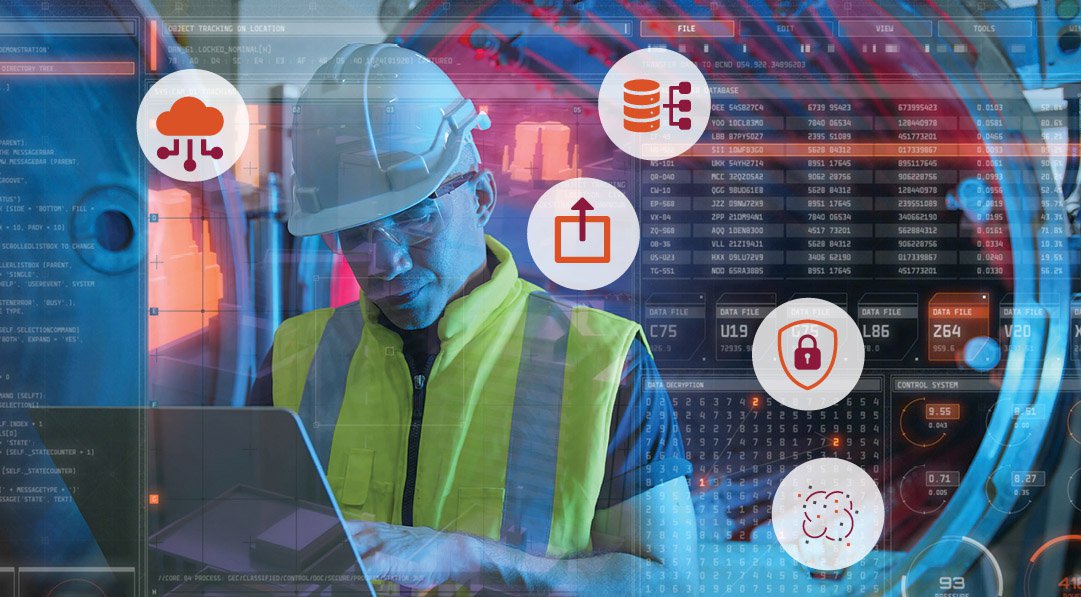

DEPARTMENTS

INSTRUMENTATION
SAMANTHA CONNELL, CIH, is the global health programs director at Indorama Ventures PCL and immediate past president of the International Occupational Hygiene Association.
EMANUELE CAUDA, PhD, CSP, is the director of the NIOSH Center on Direct Reading and Sensor Technologies and chair of the IOHA Community of Practice on Particulate Matter Sensor Technologies.
Send feedback to The Synergist.
IOHA’s Community of Practice on Particulate Matter Sensor Technologies
BY SAMANTHA CONNELL AND EMANUELE CAUDA
The International Occupational Hygiene Association (IOHA) was established in 1987 as a non-governmental organization for the purposes of improving, promoting, and developing occupational hygiene (OH) worldwide. Its 43 member organizations now represent over 20,000 practicing OH professionals globally. IOHA aims to enhance the worldwide network of OH organizations that promote, develop, and improve occupational hygiene around the world to provide a safe and healthy working environment for all. AIHA is a member of IOHA and therefore of the global network.
Occupational hazards are global and wide-ranging: examples include aerosols, noise, heat stress, gases and vapors, and fatigue. While industrial or occupational hygiene practices may differ between countries and jurisdictions due to legislative, cultural, historical, or other factors, professionals share principles and processes of assessment, monitoring, and risk mitigation in common. Furthermore, professionals adopt many common methodologies and technologies to carry out OH activities.
The NIOSH Center for Direct Reading and Sensor Technologies has noted worldwide interest in sensor technologies for OH and particularly for aerosols or particulate matter (PM). The Center has been invited to present and participate at several national and global OH conferences focused on the proper selection and adoption of sensor technologies. See the sidebar below for a list of relevant resources from the Center.
CREATING AN INTERNATIONAL SENSOR TECHNOLOGY FORUM
Following a suggestion by the Center and several discussions with NIOSH, the IOHA Board created a Community of Practice (COP) for PM Sensor Technologies in 2023. The COP was formed in 2024 for the purpose of providing the international OH community with a common, accessible forum for up-to-date information on sensor technologies for PM or aerosols in general from both technical and applied standpoints. This information may include the latest research, the science behind the technology, findings shared by field practitioners, and so on. IOHA aims for the COP to help advance the profession by connecting experts from across the globe to share knowledge and practices. In addition, the COP aligns with IOHA’s mission to enhance the worldwide OH network. The intent behind the IOHA COP is to streamline the OH profession’s approach to topics such as PM sensor technologies, removing the need for national organizations to start sensor technology programs from scratch or duplicate each other’s efforts.
The COP will continue to evolve under the direction of its members based on the needs of the OH community, and it will maintain its inclusive and international nature for OH communities around the globe. The COP, as an established IOHA working group, reports directly to the IOHA board of directors via biannual meeting reports.
COP SCOPE AND ACTIVITIES
The COP’s scope is to promote the generation, dissemination, sharing, and harmonization of ideas, findings, and challenges relative to the selection and adoption of PM sensor technologies for OH. PM sensor technologies are in constant, rapid evolution. Similarly, national associations and groups of occupational hygienists in the private sector, consulting, and academia are establishing programs on this topic at a steady rate. While there is an almost unanimous consensus in the global OH community that PM sensor technologies will be part of the toolbox of occupational hygienists in the future, there is equal consensus that several aspects of these technologies are still substantially problematic. The quality of the data generated by these technologies and how to improve them, the strengths and limitations of the information produced, and the relevant ethical and privacy considerations are only some of the aspects covered by the national and international efforts mentioned previously. Training and guidance documents are needed worldwide for the proper selection and adoption of these technologies.
The COP functions in an advisory capacity and does not have any decision-making or standard-generation authority on behalf of IOHA or the OH profession. It aims to collect information on established efforts around the world, including any relevant findings and publications, and facilitate discussion on best practices or problematic aspects. While there are other regional and international groups of OH practitioners focusing on various stressors or sectors, the COP differs by aiming to maintain an overarching, global nature that can support these groups as well.
Founded in January 2024, the COP includes 39 members from 22 national associations and organizations. Members met virtually throughout the year and in person in June 2024 at the 13th IOHA International Scientific Conference in Dublin, Ireland. The COP is open to all IOHA member organizations with a maximum of two representatives per organization. These representatives should act as national representatives on the COP.
Training and guidance documents are needed worldwide for the proper selection and adoption of sensor technologies.

Preliminary findings and outcomes of the COP’s discussions include:
•the use of PM sensors for specific OH activities and applications, including how PM sensors can be evaluated and the data treated
•the global need for more training and education on the selection and adoption of PM sensors for OH
•recommendations for manufacturers, including on how commercial products are proposed and tested based on activities and applications
One topic discussed extensively by the COP has been the use of PM sensors in video exposure monitoring. COP members have shared experiences with this approach, ranging from technical aspects to incremental and mindful adoption practices that consider workers’ receptibility and engagement with the technology. The COP members acknowledged how cultural differences can impact the development and use of this approach. The COP is considering collecting these discussions in a publication.
TOWARD GLOBAL COLLABORATION
Although still in its infancy, the COP demonstrates the possibility of advancing the OH profession through global conversations on relevant technical and applied topics. This approach should be considered for other OH topics faced by our profession across the globe.
“Hygienists have the opportunity and responsibility to evolve and consider the use of all tools potentially available to accomplish the assessment and control of risk,” according to Michael Riediker, a member of the IOHA COP from the Swiss Society of Occupational Hygiene. The IOHA COP aims to help equip occupational hygienists worldwide in this evolution. If you are interested in meeting the members of the COP, reach out to the authors of this article or to AIHA.
Thinkhubstudio/Getty Images
RESOURCES ON SENSORS
From the NIOSH Center for Direct Reading and Sensor Technologies:
American Journal of Industrial Medicine: “Advanced Sensor Technologies and the Future of Work” (July 2021).
International Journal of Environmental Research and Public Health: “Using Core Elements of Health and Safety Management Systems to Support Worker Well-Being during Technology Integration” (November 2022).
Italian Journal of Occupational and Environmental Hygiene: “Standardization of Data from Hazard Sensors: A New Challenge and Opportunity in Occupational Hygiene” (2022).
NIOSH: Components for Evaluation of Direct-Reading Monitors for Gases and Vapors (July 2012).
NIOSH Science Blog: “Wearable Sensors: An Ethical Framework for Decision-Making” (January 2017).
The Synergist: “The Challenge for Industrial Hygiene 4.0: A NIOSH Perspective on Direct-Reading Methodologies and Real-Time Monitoring in Occupational Environments” (February 2022).
From AIHA’s Real-Time Detection Systems Committee:
AIHA: “Establishing a Process for the Setting of Real-Time Detection System Alarms” (December 2022).
AIHA: “Reporting Specifications for Electronic Real Time Gas and Vapor Detection Equipment” (January 2022).
AIHA: “Technical Framework: Guidance on Use of Direct Reading Instruments” (May 2022).
The Synergist: “Practical Examples of Alarm-Setting Guidance,” parts one, two, and three (June/July, October, and December 2023).